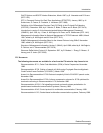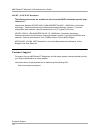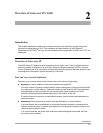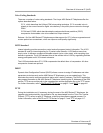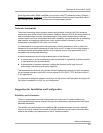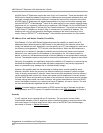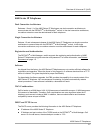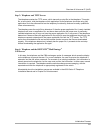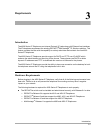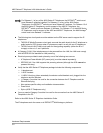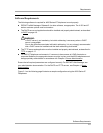
4600 Series IP Telephone LAN Administrator’s Guide
Suggestions for Installation and Configuration
2-6
All 4600 Series IP Telephones support the tools "ping" and "traceroute." These are standard LAN/
WAN tools for identifying whether two points on a network can communicate with each other, and
what path a sample communication takes as it traverses the network from one point to the other.
All 4600 Series IP Telephones will respond appropriately to a ping or a traceroute message sent
from the DEFINITY
®
or MultiVantage
TM
switch or any other source on your network, although these
telephones will not, in general, initiate a ping or traceroute. With Release 1.6 of the 4600 Series IP
Telephones comes support of "remote ping" and "remote traceroute." The switch can instruct such
a 4600 Series IP Telephone to initiate a ping, or a traceroute, to a specified IP address. The
telephone will carry out that instruction and send a message to the switch informing it of the
results. See your DEFINITY
®
or MultiVantage
TM
Administration documentation for more details.
IP Address Lists and Station Number Portability 2
With Release 1.5 of the 4600 Series Telephones comes the capability to specify lists of IP
addresses (either dotted decimal or DNS format) for key elements of the network, rather than
merely one address for each. Specifically, you can specify up to 127 total characters in each list of
the following: router/gateways, TFTP servers, and the call server. When the 4600 telephone is
powered up or is rebooted, it attempts to establish communication with these various network
elements in turn, starting with the first address on the respective list. If the communication is
denied, or times out, the telephone proceeds to the next address on the appropriate list and tries
that one. The telephone does not report failure unless all the addresses on a given list have failed.
Obviously, this capability can significantly improve the reliability of IP telephony by maximizing the
likelihood the telephone can communicate with backup equipment if the primary equipment is
down or inaccessible (say, perhaps due to a limited network outage).
However, this capability also has the advantage of making station number portability easier.
Assume a situation where the company has multiple locations (for example, London and New
York), all sharing a corporate IP network. Users want to take their telephones from their offices in
London and bring them to New York. When users power up their telephones in the new location,
the local DHCP server will generally route them to the local switch, which denies service because
it knows nothing about these new users. However, with proper administration of the local DHCP
server, the telephone knows to try a second call server IP address, this one in London. The user
can then be automatically registered with the London switch.
Chapter 4
contains details on administration of DCHP servers for lists of alternate call servers,
router/gateways, and TFTP servers. For specific information, see DNS Addressing
in Chapter 4.
Security 2
In VoIP, physical wire is replaced with an IP connection. The connection is more mobile.
Unauthorized relocation of the IP telephone allows unauthorized users to send and receive calls
as the valid owner. For further details on toll fraud, refer to the DEFINITY
®
or MultiVantage
TM
documents in Chapter 1, Related Documents
.




